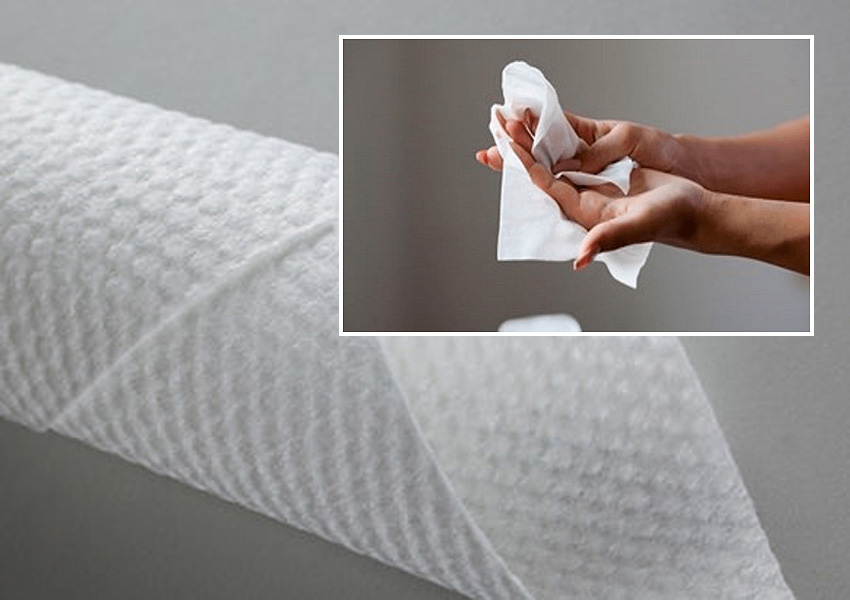Publications
Last
Advertisement
Partners


Spunlace - die cleaning technologies

While the hydro-weaving unit is a key part of the equipment in the production of nonwovens "spunlace", the equipment for cleaning the die plates is one of the most important auxiliary devices that ensure the quality characteristics and performance of the spunlace line. The die plate inserted inside the hydrojet head of the unit generates thousands of high-pressure water jets, the uniformity of pressure of which, as well as the uniformity of the placement of working holes per unit area of the die plate, have a significant impact on the quality of non-woven material of the "spanlace" type.
The thinnest water jets come out of tiny holes with a diameter of 0.08 to 0.22 mm, evenly spaced on the die in one, two or three rows. Impurities and minerals in the water can block the holes and cause damage to the non-woven fabric. Thus, manufacturers have a need for a machine for washing the die plates, which would be efficient and convenient when performing routine work on cleaning the die, and the cleaning process itself would not take much time.
Die cleaning technologies
1 - Ultrasonic cleaning
Traditionally, the cleaning of die plates "spunlace" is based on ultrasonic technology. Ultrasound produces the effects of vibration and cavitation (bubble formation), which accelerate the removal of impurities. A solution of 3.5 liters of 85% phosphoric acid and 100 liters of demineralized water can be used as an immersion liquid. Alternatively, a solution of 3 liters of sodium hydroxide and 100 liters of demineralized water can be used.
In practical production conditions, the die plates are cleaned after every 6-8 hours of operation by ultrasonic method. The cleaning procedure in an ultrasonic bath usually takes about 30 minutes. When using this method, frequent cleaning can lead to the fact that the die will be repeatedly subjected to instantaneous high pressure created by an ultrasonic wave, which will further damage the profile of the capillaries of the die and small cracks in the walls of the capillaries, which in turn will increase contamination and weaken the effectiveness of further cleaning. Such damages will negatively affect the uniformity of the pressure and profile of the water jets, and, of course, the quality of bonding of non-woven material. When the die plate is clogged, dense stripes and lint will remain on the surface of the fabric, which will negatively affect the quality of the surface of the canvas.
2 - Chemical hydrotreating
The functional principle of chemical hydrotreating of die plates combines two technologies. Firstly, it is chemical cleaning – the die plate is immersed in a container with a chemical solution. The immersion chemical solution can remove various substances blocking the capillaries of the die, including fiber residues, microorganisms and their mucus, oil and scale, sediment, dust and other substances from the water supply system. At the same time, the immersion solution of a certain formula does not cause corrosion of the die itself and does not harm the capillaries. Secondly, it is hydrotreating: solid dirt on the surface of the die is cleaned by a jet of water under high pressure. The water hammer created by a jet of water under high pressure grinds and separates dirt. The working pressure during the cleaning process is very important. This technology uses a water flow with a constant pressure of 200 bar as a working water flow in the hydrotreating process.
Working principle
The immersion tank includes the main body for the chemical immersion solution, a control unit located at one end of the tank, a temperature controller and an electric heating element in the tank. The cleaning procedure is carried out as follows: prepare a chemical immersion solution in a container; turn on the heating element and bring the temperature of the immersion solution to 60 C ~ 80 C; place the die plate in the solution for about one hour. In the process of chemical cleaning, a chemical immersion solution is of great importance, which directly affects the cleaning effect. Usually, a simple and convenient formula is used for these purposes: 10-15% ammonium chloride solution, ammonia and EDTA (ethylenediaminetetraacetic acid).
Further, the cleaning of the die continues in the cleaning chamber with high-pressure water. The die plate is placed in the inlet of the chamber. The guide wheel moves the die into the cleaning chamber, where it is subjected to high-pressure water jet treatment. In this case, all purified impurities are removed together with water. This is followed by one or two-stage drying of the die with compressed air.













